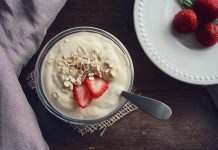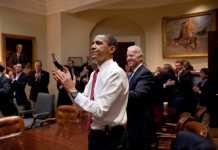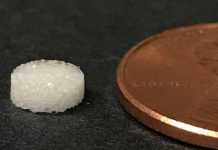October 2004 - Carefully controlling the amount of food and drink that formerly sedentary, overweight people ingest during and after short-term exercise has a significant impact on insulin action. The same study showed a measurable affect on the subjects' cardiovascular disease (CVD) risk factors, according to researchers in the Exercise Science Department at the University of Massachusetts, Amherst.
After only six days of enough treadmill exercise to burn 500 kilocalories (k/cal) each day, the eight subjects in the negative energy balance (NEG) group, who received no energy replacement, showed a significant (p=0.037) 40% increase in insulin action (measured by glucose rate of disappearance/steady state insulin). However insulin action was unchanged in the zero energy balance group (ZERO), who were required to finish a sports drink during exercise and additional food afterward to "replace" the 500 k/cal.
The same subjects showed positive trends in both traditional and novel CVD risk factors, though not at a significant level. On the other hand, the subjects in the ZERO group showed either virtually no change or bad changes in CVD risk factors.
Both studies were performed on the same groups by Steven E. Black (a doctoral student) and Elizabeth Mitchell (an undergraduate honors student), both working in the laboratory of Barry Braun in the Department of Exercise Science, University of Massachusetts, Amherst. Black will present, "Improved insulin action following short-term exercise training: effects of exercise or energy balance?" while Mitchell will present "The effects of short-term exercise, in negative or zero energy balance, on CVD risk factors."
A detailed program, including abstracts, for the entire meeting is available upon request to members of the media.
Continue Reading Below ↓↓↓
Arrangements for on-site interviews, or telephone interviews during the meeting can be arranged through APS from Mayer Resnick (cell: 301.332.4402, [email protected]) or Stacy Brooks 301.634.7253 ([email protected]). From Oct. 6 (2 p.m.) � Oct. 9, the onsite phone number in Austin is 512.482.8000, room 602, or 512.682.2950 direct.
The meeting is cosponsored by APS, the American College of Sports Medicine and the Canadian Society for Exercise Physiology. Additional support through unrestricted educational grants came from: the National Aeronautics and Space Administration (NASA), the National Institute of Arthritis and Musculoskeletal and Skin Diseases (NIAMSD), Gatorade Sports Sciences Institute, Pfizer Inc. and the U.S. Army Research Institute of Environmental Medicine (USARIEM).
Insulin results show key role for exercise in pre- and type 2-diabetes
One aspect of the research was to establish the role of energy balance in mediating improved insulin action after the short-term training. Insulin action was measured before the six days of exercise started and then again on the seventh day, after the fixed energy balance was over, by infusing glucose and very small quantities of a glucose stable isotope.
According to Black, "short-term exercise training in negative energy balance significantly reduced insulin resistance," however, replacing energy lost while exercising "resulted in no change in insulin action."
Black said the findings "suggest that subtle changes in energy balance that precede measurable fat loss play a key role in mediating the beneficial effects of exercise on whole-body insulin action." Braun added: "The new finding is that the beneficial effect of exercise (in the short-term) appears to be mediated by a subtle mismatch between energy intake and expenditure. So, the 'exercise' effect can be opposed by adding back the energy expended during exercise. The implication is that the 'exercise' signal may be synonymous with an 'energy deficit' signal."
The broad, important implications in the field of diabetes, Braun noted, is "both in the use of exercise to prevent or delay the transition from insulin resistance (prediabetes) to overt type-2 diabetes, and in the optimal use of exercise to manage blood sugar in people who already have diabetes."
Positive CVD trend in concurrent study
Both the NEG and ZERO groups of eight each were matched for age (30-60) and other physical characteristics and involved previously sedentary, overweight subjects who trained for six consecutive days on the treadmill walking at 60-65% of maximum vital oxygen capacity designed to expend about 500 k/cals per day.
While the CVD changes weren't statistically significant, Mitchell noted, "in the negative energy balance group (NEG), all of the markers were trending in a favorable direction, whereas almost no changes, or even slightly negative changes, occurred in the zero energy balance (ZERO) group."
Continue Reading Below ↓↓↓
After six days, the major markers showed the following major results: mean weight loss was 0.7 kg in NEG and .03 kg in ZERO; triglycerides declined 16% in NEG, 5.3% in ZERO; total cholesterol declined modestly for NEG and was steady in ZERO; HDL (high-density lipoprotein) was unchanged in NEG, but actually fell in the ZERO group; there was an 18.5% decrease in CRP (C-reactive protein) and no change in the ZERO group in this measure of liver function and endothelium inflammation, which some research has shown to correlate with certain heart problems.
Mitchell noted that the study involved considerable time commitment over a short period and that there was good oversight and controls, especially the last three days when all subjects were provided with all their food needs. During exercise the ZERO group had to finish a sports drink and then afterward were given their choice of a fruit, yogurt "smoothie" or energy bar to bring their caloric intake up to the amount of energy expended, designed to be 500 k/cal.
The research study was supported by the Glass Family Trust The American Physiological Society was founded in 1887 to foster basic and applied bioscience.
Source: American Physiological Society









